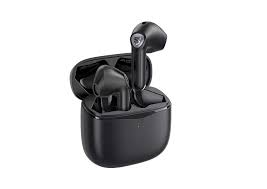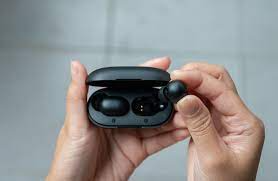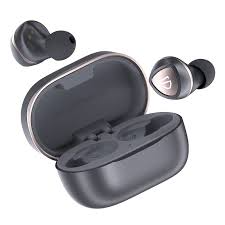Introduction
In the realm of wireless audio technology, earbuds have evolved into a must-have accessory for music lovers and audiophiles alike. They offer convenience, portability, and often, advanced features that enhance your listening experience. However, like any tech gadget, they can sometimes encounter issues ranging from connectivity problems to software malfunctions. One common solution to these problems is resetting your wireless earbuds. This detailed guide will walk you through seven different methods to reset various types of wireless earbuds, helping you troubleshoot and restore their optimal performance.
1. Understanding Why You Need to Reset Your Wireless Earbuds
Wireless earbuds, with their compact design and cutting-edge technology, are a marvel of modern audio devices. However, even the most advanced gadgets can experience occasional hiccups. A reset is often a go-to solution when your earbuds start acting up or cease to function optimally. Here’s why you might need to reset your wireless earbuds:
Connection Issues:
One of the primary reasons to reset your earbuds is when they face pairing or connectivity problems. This could manifest as an inability to pair with your device, frequent disconnections, or difficulty in connecting to multiple devices. A reset clears out any stored Bluetooth connections and resets the connection protocol, allowing for a fresh pairing process.
Software Glitches:
Sometimes, software bugs can lead to performance issues such as audio dropout, unresponsiveness to touch controls, or incorrect battery readings. Resetting the earbuds essentially wipes the system clean, erasing any temporary data that may be causing these glitches.
Battery Life Issues:
If you notice a significant decrease in battery life or if your earbuds won’t charge properly, a reset can help. It can clear any misconfigurations in the power management settings, potentially restoring normal battery performance.
Firmware Update Failure:
After a firmware update, some earbuds might not function correctly due to incomplete or corrupted installations. Resetting can revert the software to its pre-update state, allowing you to attempt the firmware update again without the previous errors.
Customization Resets:
If you’ve customized settings like EQ profiles, touch control functions, or noise cancellation levels and wish to revert them to default, resetting is the way to go.
Selling or Giving Away:
Lastly, if you’re planning to sell or give away your wireless earbuds, it’s good practice to reset them first. This ensures that all your personal data, including paired devices and custom settings, are removed, protecting your privacy.
In summary, resetting wireless earbuds serves as a powerful troubleshooting tool for various issues ranging from hardware malfunctions to software complexities. Always remember to consult the manufacturer’s instructions before proceeding with a reset, as different models may have unique procedures. And while it’s a reliable fix for many problems, it’s also essential to keep your earbuds’ firmware updated and maintain proper charging habits to ensure their longevity and optimal performance.
2. The Universal Method: Entering Pairing Mode
Most wireless earbuds have a universal method to enter pairing mode, which is also the starting point for resetting them. Typically, this involves pressing and holding a specific button combination for several seconds until an LED indicator blinks rapidly, signifying it’s ready to pair. Check your user manual for exact instructions as it varies across models. Holding the buds in pairing mode for an extended period (usually 10-20 seconds) can trigger a reset process.
3. Using the Companion App
Many modern wireless earbuds come with a companion app that provides additional control and diagnostic tools. These apps often include a ‘reset’ or ‘restore factory settings’ option within their settings menu. This method is straightforward and typically more intuitive than hardware-based resets. Follow the steps outlined in the app, ensuring your earbuds are connected to your device while performing the reset.
4. Firmware Update as an Indirect Reset
Sometimes, a firmware update itself can act as a soft reset. If your earbuds are experiencing glitches, check if there’s an available update. Download and install the latest firmware, following manufacturer instructions carefully. The update might fix the underlying issue and refresh the system without requiring a manual reset.
5. Physical Button Reset
For some earbuds, especially those without companion apps, a physical reset may involve a unique sequence of button presses. This could mean pressing both earbuds simultaneously, using the charging case buttons, or cycling through different modes. Ensure the earbuds are charged enough before attempting this, as depleted batteries can interfere with the reset process.
6. Charging Case Reset
Some wireless earbuds use their charging cases as part of the reset process. Place the earbuds inside the case, close the lid, and then press and hold a specific button on the case for several seconds. This method ensures a complete power cycle, clearing out any stored data and resetting the earbuds to their initial state.
7. When All Else Fails: Contact Customer Support
Despite your best efforts, there may be instances where resetting your wireless earbuds doesn’t resolve the issue at hand. If you’ve tried all the standard troubleshooting steps including resetting, updating firmware, checking battery health and ensuring proper charging, but the problem persists, it’s time to consider reaching out to customer support.
Customer support teams are equipped with in-depth product knowledge and have access to specialized tools and resources that can diagnose and fix complex problems. They might know about specific issues or bugs that users aren’t aware of, or they could guide you through more advanced troubleshooting techniques tailored to your device model.
Here’s a step-by-step process when contacting customer support:
Gather Information:
Before contacting support, ensure you have relevant information ready such as your earbud model number, serial number, current firmware version, and a detailed description of the problem you’re facing. Include when the issue started, what you were doing when it occurred, and any actions you’ve taken to try and resolve it.
Contact Channels:
Most manufacturers provide multiple channels for customer service, which may include phone calls, live chats, email, or social media platforms. Choose the one that is most convenient for you and offers the potential for clear communication about your issue.
Be Patient and Detailed:
Explain the issue thoroughly and patiently. Provide screenshots or videos if they help illustrate the problem. The more precise you are, the better equipped the support team will be to assist you.
Follow Their Guidance:
Once connected with a representative, follow their instructions carefully. They might ask you to perform additional checks or reset procedures specific to your device’s issue. Be open to these suggestions as they often lead to a resolution.
Repair or Replacement:
In some cases, the issue may require a repair or replacement under warranty. The customer support team can guide you through this process, including shipping details, estimated turnaround times, and any costs involved.
Remember, reaching out to customer support should not be seen as a last resort but rather an essential part of the troubleshooting process, especially when dealing with technical devices like wireless earbuds. They are there to help you get the most out of your purchase and restore your listening experience to its optimal state.
Conclusion
Resetting your wireless earbuds can breathe new life into your audio gear, solving a host of technical issues. While it’s a simple process, patience and attention to detail are crucial. Always refer to your user manual first and exhaust all provided resources before seeking external help. By mastering the art of resetting your earbuds, you ensure that you’re always just a few taps away from enjoying seamless, high-quality audio experiences.